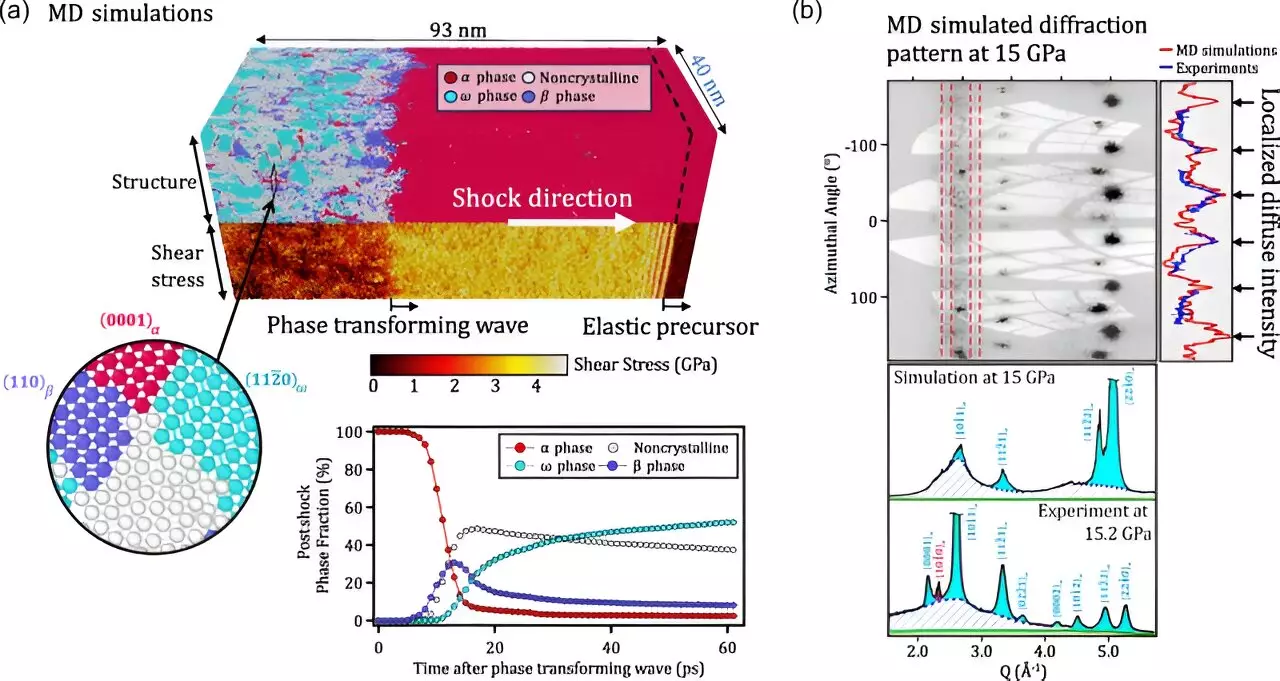In the realm of modern technology, the significance of material science cannot be overstated. This is particularly true for materials employed in extreme environments, such as those found in nuclear energy systems or military applications. The ability to withstand harsh conditions—ranging from extreme pressures to elevated temperatures and corrosive surroundings—is essential for the reliability and safety of technological systems. As researchers strive towards innovations that prioritize resilience, affordability, weight reduction, and sustainability, understanding the atomic-level dynamics of these materials becomes paramount.
Recent pioneering research conducted by scientists at Lawrence Livermore National Laboratory (LLNL) sheds light on the multifaceted behavior of zirconium, a metal traditionally recognized for its strength and low neutron absorption properties. When subjected to high-pressure conditions, single crystal samples of zirconium exhibited unique deformation patterns that challenge prior understandings. This groundbreaking study demonstrates that materials do not merely bend or break under stress, but instead undergo complex transformations that are influenced by various underlying mechanisms.
Zirconium’s response to pressure involves several intricate processes, including dislocation slip, phase transitions, and even amorphization—where ordered atomic structures become disordered. As noted by lead researcher Saransh Soderlind, deciphering these microscopic mechanisms is critical for formulating predictive models that can accurately anticipate how materials will perform in extreme situations. Traditional models often simplified the behavior of metals under pressure, but the new findings suggest that there is much more to the story, particularly when dealing with single crystalline structures.
The research utilized advanced methodologies such as femtosecond in-situ X-ray diffraction to capture the rapid behavior of zirconium at high pressures. This technique allowed researchers to observe dynamic atomic interactions and the early signs of disorder that have never before been documented in elemental metals. These observations reveal that zirconium undergoes multiple pathways of crystal structure transformations—an intriguing revelation that was absent in studies of polycrystalline samples. Such groundbreaking work represents a significant shift in our understanding of material dynamics under severe conditions.
The implications of the LLNL study extend far beyond zirconium. The intricate patterns of atomic movements and deformation mechanisms observed may be indicative of behaviors that exist in a broad spectrum of materials subjected to high pressures. As highlighted by researcher Raymond Smith, gaining comprehensive insights into how materials respond to extreme conditions will facilitate the development of next-generation materials that are not only capable of withstanding such environments but are also more efficient and sustainable.
Zirconium alloys have long been employed in the nuclear sector, particularly as cladding for fuel rods, owing to their unique properties. With this new research, the understanding of zirconium’s behavior under intense stress could enhance the safety and efficiency of nuclear energy production, ensuring continued advancements in this vital field. As researchers delve deeper into the complexities of material behaviors, the potential for innovation across various industries remains vast, ushering in a new era where materials can be designed with unparalleled precision to meet extreme demands.


Leave a Reply